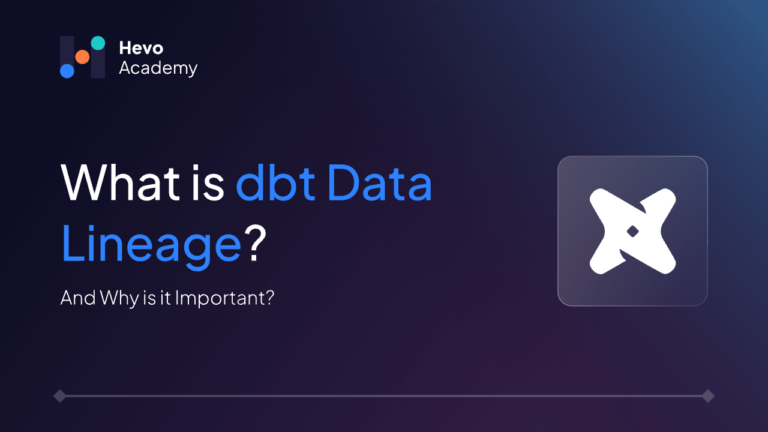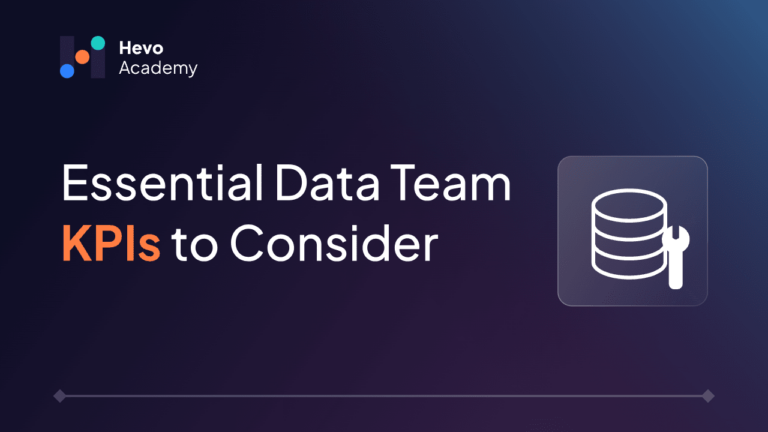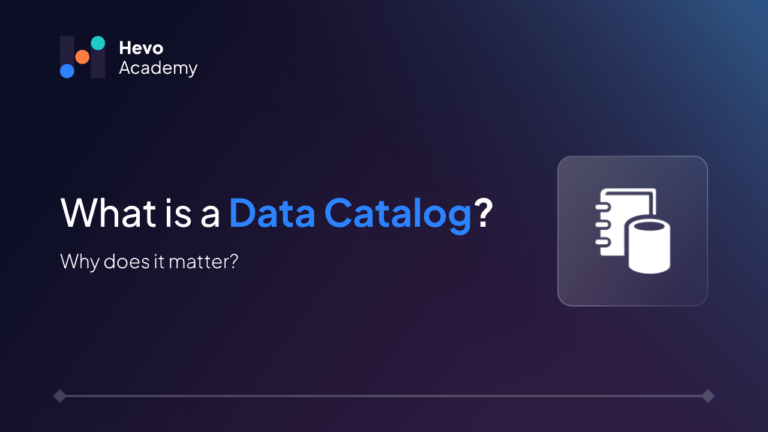“Data will talk to you if you’re willing to listen.” — Jim Bergeson
Table of Contents
Organizations struggle to manage growing volumes of information, crucial for decision-making and market competition. Without control and oversight, information can become a liability. Data governance addresses this by providing policies, processes, and people to ensure proper information use, benefiting the organization. This blog will cover the key data governance pillars, understand their importance, and how they contribute to a robust data governance framework.
What is Data Governance?
Data governance can be defined as a complex set of rules that regulate all aspects of data management. It is intended to ensure that data is correct, coherent, protected, and used correctly. This enables credibility and stewardship over the use of data in the organization. Check out Data Governance Components to learn more about Data Governance.
Why Organizations Need a Strong Data Governance Framework
Good data governance is essential in today’s big data environment, while the other is impractical. Many more organizations are gradually waking up to the need for a clear and structured plan for managing their data.
- Compliance with Regulations: Compliance with regulations like GDPR and CCPA to avoid fines and legal issues.
- Data-Driven Decision Making: Data-driven decision making with accurate and reliable information
- Risk Management: Risk management to prevent losses from theft, error, or non-compliance.
- Operational Efficiency: Operational efficiency through clear responsibilities and reduced waste.
- Building Trust with Stakeholders: Building trust with stakeholders by protecting data and security, ensuring customers, partners, and employees trust the organization with their information.
Hevo Data, the no-code data integration platform, provides a solid foundation for robust data governance. By streamlining data collection, integration, and management, Hevo helps you:
- Improve data quality: Ensure data accuracy and consistency across your organization.
- Enhance data security: Protect sensitive data with Hevo’s secure data pipelines.
- Simplify data compliance: Meet regulatory requirements and industry standards.
- Drive data-driven decisions: Make informed choices based on reliable, accessible data.
Start your 14-day free trial today and discover how Hevo Data can empower your data governance initiatives.
Get Started with Hevo for FreeData Governance Pillars
Some key success factors about data governance, or pillars, are vital in determining the success of any organization’s data governance framework. These pillars shall form the basis for data management and protection within the organization.
1. Data Ownership
Data control is about having exclusive control of specific data by specific individuals. This means that they are in charge with the accuracy, security and compliance of the data with laws. Key aspects of data ownership include:
- Roles of Data Owners and Stewards: Data owners are held more accountable for their data, and their responsibilities include ensuring the accuracy of an organization’s data; data stewards, on the other hand, ensure that the right procedures are followed and that the principles of data governance are practiced.
- Importance of Accountability: This means that there is always one party who is clear that they are responsible for the data. If something occurs that leads to wrong data, security breaches, or similar failures, then the owner or steward of the data is accountable.
2. Data Quality
Data quality is critical. If data is wrong, missing, or inconsistent, this can further lead to errors in analysis, decision-making, and other operations. Key elements of data quality include:
- Accuracy, Consistency, and Reliability: Data has to be accurate, coherent, and reliable. This means that it has to be precise in its calculations, uniform where there are several sets of data to process, and produce stable decisions.
- Processes for Maintaining Data Quality: Data sampling, cleansing, and inspection are some of the activities that assist in data quality. These are time-consuming operations, and they will require a lot of time and energy to execute if proper tools are not employed.
- Impact on Decision-Making: Data quality is of utmost importance to decision-making and organizational performance because all business decisions are made based on data. It offers organizations the guarantee and confidence that they need to adopt their data as they look to improve outcomes.
3. Data Privacy and Security
Data governance also entails information security and compliance with the privacy law. It encompasses the measures that can be taken to avoid data leakage and protect against cyber-related calamities. Key considerations include:
- Regulatory Compliance: Meet legal frameworks like GDPR and CCPA to avoid million-dollar penalties and reputational damage.
- Data Security Measures: Implement encryption, access control, and vigilance to protect data and adapt to new threats.
- Building Trust with Stakeholders: Ensure data privacy and security to build trust with customers, partners, and employees, which is essential for lasting relationships and achieving organizational objectives.
4. Data Cataloging and Metadata Management
Data cataloging and metadata management is the process of generating the catalog and metadata of all the existing data assets. This makes the data more accessible and understandable for users to easily find and use it. Key aspects include:
- Creating a Data Catalog: A Data Catalog is a centralized reference point for data assets, providing a clear view of available data. It helps users find and understand relevant information for informed decision-making.
- Role of Metadata: Metadata is key in describing data origin, intent, and format. This enables users to understand content relevance and authenticity, making data more usable.
- Enhancing Data Accessibility: By collecting data assets in one place, a Data Catalog saves time, boosts productivity, and enhances data accessibility. It frees employees to focus on more complex work, improving work efficiency.
5. Data Lifecycle Management
Effective data governance requires clear policies and standards to manage organizational data. This ensures data is handled to achieve business goals, comply with regulations, and provide valuable insights. Key considerations include:
- Policies for Data Retention and Disposal: Data Retention Policies help organizations manage data effectively by defining storage duration, archiving, and purging. This approach reduces storage costs and legal liabilities and enhances data compliance, minimizing the risk of breaches and unauthorized access.
- Reducing Risks and Costs: Proper data disposal eliminates unnecessary data, reducing vulnerability to theft and breaches. It also decreases storage needs, making data safer and cheaper to manage. This helps organizations maintain a clean data environment, focusing on relevant and valuable data.
6. Data Governance Policies and Standards
Clear data policies and standards are crucial for organizations to manage data effectively, ensuring it supports business goals, complies with regulations, and provides valuable insights. This pillar is essential for proper data handling and achieving business objectives. Key considerations include:
- Establishing Rules and Guidelines: Some policies in data governance outline how data should be managed. These may include data access policies, data sharing policies, and data security policies.
- Consistency Across the Organization: Policies and standards ensure that all departments and teams within the organization deal with the data in the correct manner. This minimizes the chances of making mistakes and also helps ensure compliance with the legal requirements.
- Alignment with Business Objectives: Adopting policies on data governance that are in line with the firm’s general business strategies helps ensure that data management practices are strategic and goal-directed, hence helping the organization succeed.
7. Data Stewardship
Data stewardship refers to the practice of selecting specific individuals or groups that are responsible for data quality, compliance, and governance. The data stewards have a central function in the process of data governance. Key elements include:
- Role of Data Stewards: Data stewards are also charged with administering data governance policies, data quality, and adherence to laws. They intermediate between IT and business organizations.
- Supporting Effective Data Governance: Data stewards also ensure compliance with data governance standards. They offer advice on matters related to data to ensure high quality and free from vices.
- Dedicated Roles for Stewardship: It is a good idea to have data stewards because they focus on the data. This guarantees that there will be people who can handle data well.
8. Data Integration and Interoperability
The main idea is that the data should be integrated and shared between various systems and applications. Key aspects include:
- Ensuring Seamless Data Integration: Data integration consolidates data from different sources into one view. To do this, the data needs to be formatted and exchanged in a tremendously unified manner through protocols that can be merged easily.
- Role of Interoperability: Interoperability means integrating different systems to work together and effectively allow the use and sharing of data across applications.
- Challenges and Solutions: Combining data from various sources is challenging because of the dissimilar formats, systems, and protocols. To solve this, organizations can use special tools, standardized formats, and APIs to enhance data exchange compatibility.
Data Governance Best Practices
To ensure the success of a data governance framework, organizations should follow some best practices, which include:
- Set Clear Goals: Define the objectives of data governance, such as compliance with rules, data quality, or optimization of operations.
- Assign Tasks and Responsibilities: Uniquely identify who is responsible for data, including owners, stewards, and others. However, you should always ensure that someone is in charge of the data.
- Implement Data Governance Policies: Develop policies on how data should be handled and ensure compliance. It is very important that all people in the organization understand and comprehend these rules.
- Regularly Monitor and Audit: Monitor the data governance activities and perform periodic assessments to determine the potential for changes.
- Invest in Training and Education: Educate employees on data governance policies, procedures, and solutions. Help them appreciate why data governance is necessary and the steps that must be followed.
- Use Technology Tools: Implement the use of data governance tools and technology to conduct routine activities, compliance checks, and ensure data quality.
- Data Governance Strategy can be a great way to establish data governance.
The Role of Data Governance in Regulatory Compliance
Data governance is therefore important so that organizations can be in a position to adhere to data privacy laws. Regulations such as GDPR or CCPA are clear and demand structure for handling the information, which is what data governance offers. Data governance ensures that:
- Data Handling Practices are Compliant: Organizations can establish policies and procedures on data handling that do not contravene the law.
- Data is Secure: Data governance can prevent data leaks and unauthorized access to information that must be protected according to legislation.
- Organizations are Prepared for Audits: A sound data governance structure provides simple ways of proving compliance when dealing with audits and investigations. It assures organizations that they have the right documentation and controls.
Conclusion
Data governance is crucial for companies that need data as a tool and, at the same time, need to protect it. By adhering to the fundamental principles of data governance: ownership, quality, privacy, cataloging, lifecycle management, policies, stewardship, and integration, companies can take data and make it an asset. Data governance is a way of preventing such risks while enhancing the effectiveness of the business and providing better information to the business. In turn, data governance will play an increasingly key role in the data size and importance.
Schedule a personalized demo with Hevo for seamless data integration.
Frequently Asked Questions
1. What are the main pillars of data governance?
Data governance is comprised of data owners, data quality, data security and privacy, data classification and tagging, data retention and disposal, data governance rules and guidelines, data custodianship, and data sharing and conversions.
2. What are the four pillars of data?
The four fundamental aspects of data that are usually mentioned in data governance are data accuracy and completeness, data security and privacy, data governance and management, and data classification.
3. What are the three pillars of IT governance?
The three themes of IT governance usually are strategic alignment, with focus on risk management and value delivery.
4. What are the four phases of data governance?
The four phases of data governance can be outlined as: defining the data governance, planning and executing data governance, auditing and compliance and evolving the data governance.





